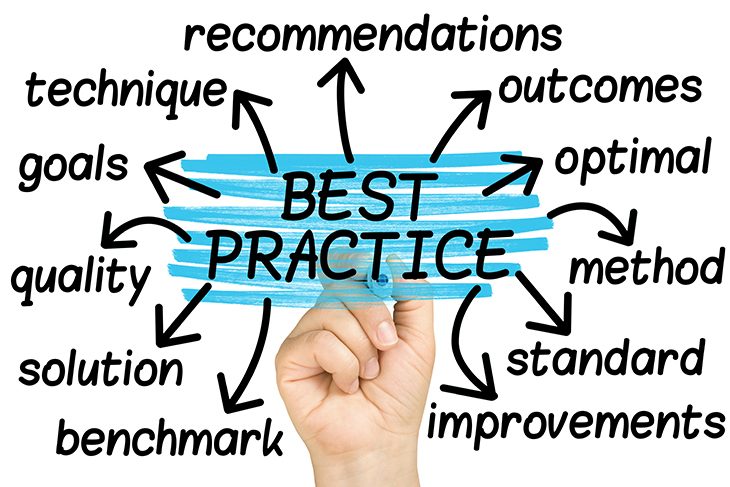Hold ’em or Fold ’em?
Knowing when to stand behind business decisions, and when to walk away, is key to success.

Most of us remember the popular Kenny Rogers song about knowing when to “hold ’em” and when to “fold ‘em.” A lot of success in life and in business can really be encompassed in the proper application of these two options. So the topic this month will be thoughts on “holding” and “folding” in our industry. Our Rule #1 for these decisions is: Is the company better off with the object of concern or not? In other words, is the company better off, “holding” or “folding.” If the recommendation is to “fold,” then consider if the situation can be reversed at reasonable cost and with acceptable effort?
Branches – We think the bricks and mortar strategy that has worked in our industry will continue to evolve quickly over the short term. Traditional wholesalers who think of their store infrastructure as their “Maginot Line” will want to consider how well that worked for the French at the start of WWII. In the past, we were proponents of a carefully mapped-out geographical march to regional dominance. The internet coupled with low-cost, rapid delivery providers are what paratroopers and fast tanks were to France’s “Maginot Line.” Their success was in avoiding direct attacks on the French forts and going around them or over them when possible. In the end, the entire French strategy had collapsed in about six weeks. Amazon and large nationals are working to change the way the world buys everything. (They are not attacking your forts, they are going around and over them.) It has and will take more than 6 weeks but it is already underway. Your stodgy, change-resistant customers are being trained to buy job materials from Amazon when they purchase products for their personal use online. Make no mistake, this week’s online purchase of a new fish finder or football jersey is a lesson in how to buy a bag of fittings or a faucet online. The generation Xers, who are the next generation in our industry, had the process mastered in grade school. Some of your stores may quickly become expensive sitting ducks that will drain your company. So that means that your stores need to be evaluated often to determine your “hold/fold” plan. The first checkmark is: PROFITABLE? We don’t want to digress into a cost accounting debate about overhead, allocations and such but a simple starting point is: Is the branch cash positive? What would the impact be if it was gone? Short term and long term. See Rule #1.
People – Our industry is notorious for “holding” people…the problem is: it’s not just the good ones that get “held.” We also seem to “hold” the bad and ugly ones who in the light of day should be “folded.” We have come to believe that this propensity to “hold” the “folders” arises mostly from a misguided sense of loyalty or maybe charity. We are huge supporters of both loyalty and charity but suggest that businesses sometimes lose sight of the real cost of these otherwise honorable traits when it comes to the makeup of their team. We’ve covered some of these suggestions in other columns but a review is in order. (As always, check with your labor attorney to make sure that any reviews or actions are done properly.)
We always suggest, other than in the cases of fraud, theft, safety, etc., issues where urgent action should be taken, that an individual be given the opportunity to change their status from “fold” to “hold.” The company should be clear about the individuals current status, what is required to deserve a change in status, how the change will be measured and the time frame for the change. (Think timeframes of days and weeks not months and years.) The ball must be placed clearly in the individual’s court with the understanding that a failure to change will alter either their position or their employment.
Take a serious look at your team on a regular basis. Here are some “warning lights” to think about:
R.O.A.D. – Retired on active duty – We think the term came from the military but the concept has fully contaminated the business world and our industry. It refers to someone who comes to work, gets paid but offers the absolute minimum effort and contribution required to stay employed. We stayed at a nice hotel in Las Vegas last year that seemed to have a full time supervisor assigned to playing hide and seek with ROADs. It involved making rounds and checking all the various hiding places for ROADs. Upon finding someone “hiding,” to then get them up and moving…sadly the odds are they will be moving to their next hiding place. Make no mistake, your company has hiding places (break rooms, rest rooms, remote corners of the warehouse or yard, plus some other team members even allow their areas to be used as hiding places for the people who are playing hide and seek)…it’s a costly game. See Rule #1.
Distracted employees - As with distracted driving, the data is in and people cannot multitask…they can only switch from one task to another…when they are doing any of these non-work tasks they are not performing to the level that the company deserves. Personal time on their phone, or non-work activities on their work computer are both problems. It can be shopping, social media or playing “Candy Crunch” See Rule #1.
Not following company procedures and best practices. Some folks have better ideas so there must be a process to improve company procedures. Until then, it’s company procedures. See Rule #1.
The company’s failure to address these issues is an insult to the good solid people who are trying really hard AND a demoralizing situation since they must often do additional work to offset the slackers on the team.
Sales people who aren’t selling – Often, through no fault of their own, sales people get too comfortable with their annuity territory. They sit on a comfy geographical area and get credit for any sale to a customer that happens to reside within that area. Because they sit on this annuity, they no longer need to work a full week. Off to the lake midday Friday, back late on Monday even though customers are still working and may need sales support. Their downtime then becomes an extra load for the inside team who are often chained to their desk.
We think you start with a list of assigned accounts that the sales person is servicing through planned sales calls, call reports and sales presentations. Any other accounts in the geographical area are either substantively served by the original sales person or reassigned to another sales person who will serve them through planned sales calls, call reports and sales presentations. Even better, they could be assigned to your most profitable sales person named “House.”
We like to “Hold” sales people who represent the company well, sell the breadth of the offering, cold call to get new customers and who promote your internet store to their accounts.
Product lines/Suppliers /Customers – You may think it is strange that we list product lines, suppliers and customers as a single topic. We think the three are so completely intertwined that we cannot discuss one without the others.
We continue to “hold” on the “Primary Supplier Strategy” that we have discussed for many years. We won’t go into detail here as we have covered it ad nauseam in other columns. (If you would like a reminder of this winning strategy, email Jen@go-spi.com) . The net of the strategy is to earn the role of being the day-in, day-out supplier to a group of selected customers. To become the daily first stop…the Starbucks of toilets (or whatever) to the trade.
As a part of that, we believe wholesalers must focus their efforts through a crisp understanding of the types of customers they want to serve. They must next determine what those customers’ need/use in completing their projects and then set about configuring their product and service offering to completely align themselves with those customers. (Some wholesalers will back into their customer type list by evaluating their product and service offering to define the types of customers they can reasonably serve. That works for us.)
We have talked before about customer alignment. Customer alignment is much like mechanical alignment. When mechanical parts are in alignment, the mechanism runs smoothly, efficiently and lasts longer. Conversely, when a mechanism is out of alignment, there is often friction, inefficiency, lots of noise and parts wear out more quickly. Customer alignment is where you are able to serve the customer’s needs smoothly, efficiently and PROFITABLY…without a lot of noise. Most wholesalers will select multiple customer types to serve but it would be a huge mistake to attempt to serve all types of customers. We have never seen this strategy succeed though many have attempted it. This alignment determination may then define the types of customers that a wholesaler will not serve. These unaligned customers are often consuming time and energy that could be more profitably applied to properly aligned prospects.
Now the assignment is to create your customer type list, followed by the products you need to stock to fully serve them and then the suppliers you need to source those products. This is your “Hold” list. The next question is: When you have products that are only used by types of customers that you don’t intend to sell…they typically show up in a report entitled “SLOW/DEAD STOCK.”
One huge caution: the “Folding” process often looks better on paper than it does in the real world. You must carefully look at your “Fold” list from many perspectives before you remove products, suppliers and customers from your life. We have seen both success and disappointment in the process. Ideally, phasing out unaligned, high-cost customers will increase profits although it might reduce short-term, top-line, sales dollars. Poorly executed, these actions can cause problems. Take time to model multiple scenarios prior to pulling the plug on any existing relationships so you go into the process with your eyes wide open.
As always, your “Hold/Fold”topic list will be unique to your situation but the process of creating your list and then sorting it into “Holding” or “Folding” can make your company better and more profitable for 2017.





